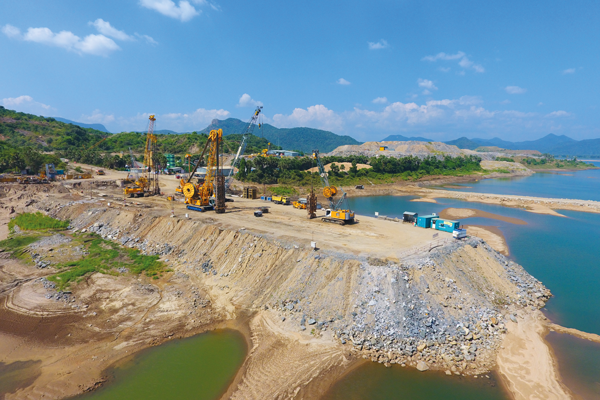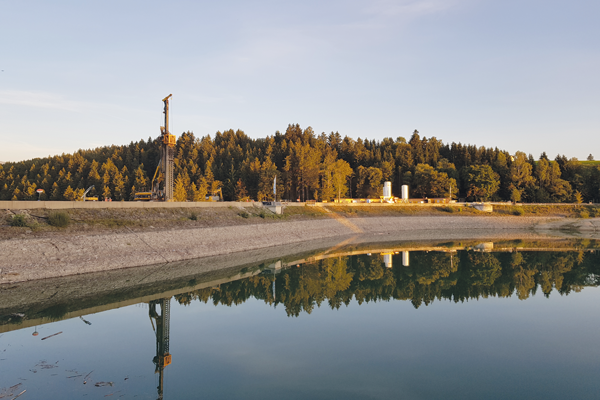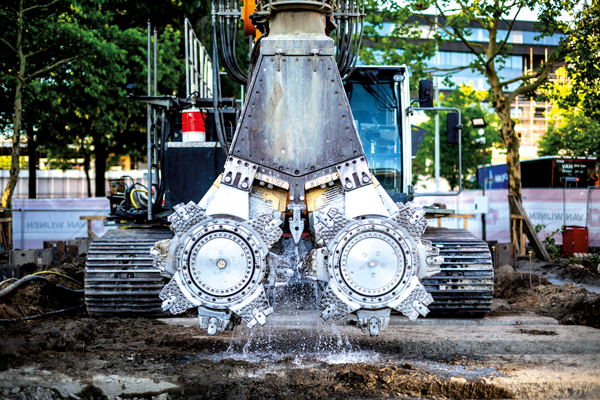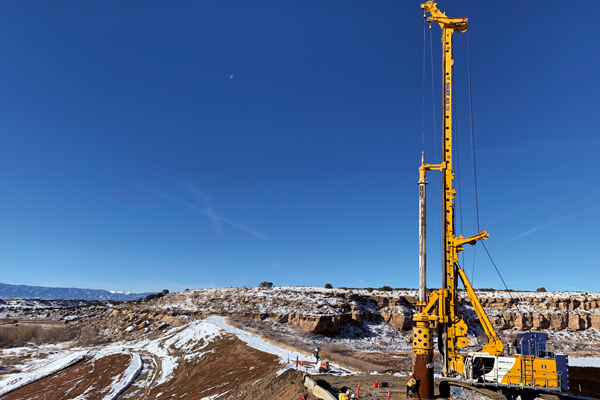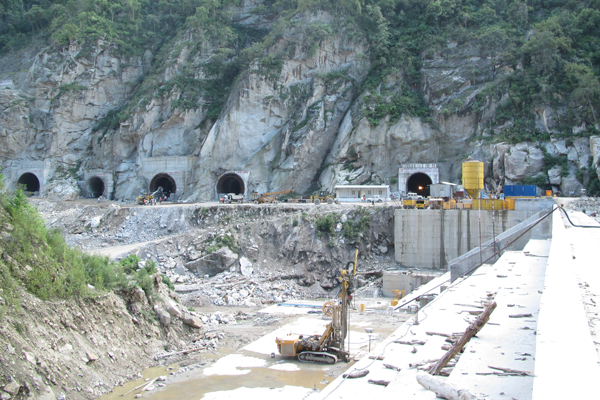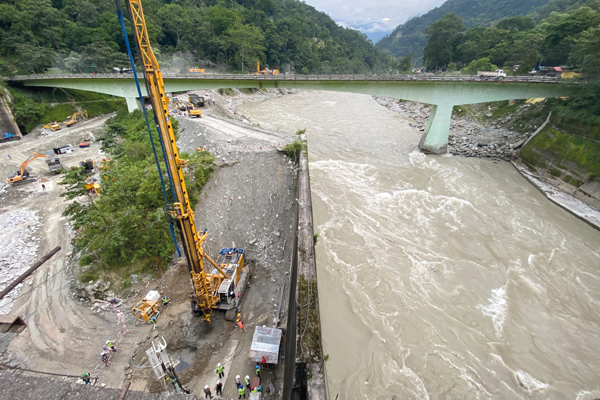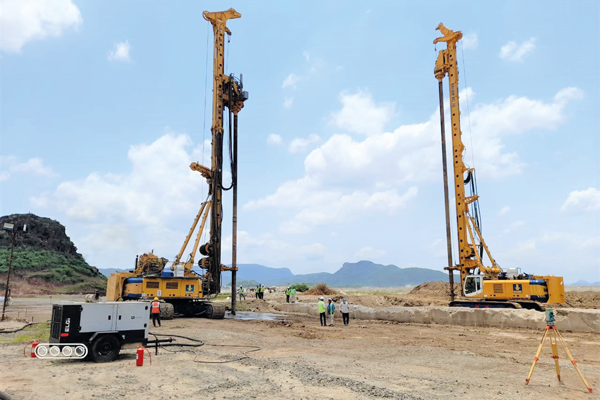Competencies
Bauer has great expertise in the design and execution of sealing and soil improvement solutions (for both new and rehabilitation projects for dams, dikes, levees, polders, mines and tailings facilities). Our core competencies include various technologies or a combination of techniques using different technologies. Project-specific requirements for special equipment are covered by solutions from the BAUER Group. The experience gained over many years with regard to the construction materials used and the integrative design solutions required for specific projects ideally complements our overall competence in contributing to durable solutions.
Construction Methods
Diaphragm wall
The classical type of positive cut-off wall for deep barriers in all types of geology is excavated by grab and/or cutter to reach depths of more than 200 m and is typically em- bedded in bedrock as designed. The walls are constructed using primary and secondary elements, with element length depending on safety, trench stability of the slurry- supported excavations and given geology. The continuous walls are formed by overcut of primaries, while constructing the secondary elements. The limited number of joints are serrated and cleaned as required for optimum interlocking.
Mixed-in-Place
Mixed-in-Place (MIP) is an in-situ soil mixing technique. Triple continuous augers drill down to the final depth, under low pressure injection of cement slurry. Upon reaching the final depth, the homogenization process takes place. During the homogenization process, the soil along the whole depth is mixed with the cement slurry. The use of triple continuous flight augers enables a vertical material flow, along the whole depth of the MIP-element, which assures a homogenized mixed soil along the whole depth of the element. MIP walls can reach depths down to 23 m below working platform and are offered in two thicknesses, 370 mm and 550 mm.
Cutter Soil Mixing
Mixing of self-hardening slurries with native soils by using a modified trench cutter technique, is an innovative and effective method for constructing cut-off walls, earth retaining walls, foundation elements, as well as for soil improvement. CSM is used mainly for stabilizing soft or loose soils (non-cohesive and cohesive). The equipment used is derived from Bauer’s cutter technology. The applicability of the method is thus extended to much harder strata, when compared to other methods of soil mixing.
Secant Pile Wall
Positive cut-off walls constructed by overlapping/interlocking circular primary and secondary elements are being executed by hydraulic drilling rigs. The open boreholes are supported by either special segmental steel casings or by slurry.
The relatively small size of equipment is advantageous for smaller work platforms. The continuous walls are being installed in all types of geology, including embedment into rock.
Grouting
Grouting is a technology used to improve the tightness of in-situ ground conditions and/or bearing capacity, using small diameter boring. The improvement can be achieved by filling pores, fissures or cavaties, using cement based or chemical based fluids.
Jet Grouting
The jet grouting process consists of the disaggregation of the soil or weak rock and its mixing with, and partial replacement by, a cementing agent; the disaggregation is
achieved by means of a high energy jet of a fluid which can be the cementing agent itself. The main advantages of this process is that large solidified jet grout elements can be executed in the ground by relatively small drill rod (borehole diameter approx. 15 cm), and the method is applicable with limited working space, too.
Soil Improvment
The use of soil improvement for Dams, Dikes/Levees, Mines and Tailing Storage Facilities follow the same necessity as soil improvement for other structures, namely settlement control, liquefaction mitigation, bearing capacity increase or the improvement of slope stability. Therefore the question of which technique is applicable will depend wholly upon: what is the aim of the treatment, what is the soil to be treated, what is the site access, and what is the most economically viable technique, then of course is it greenfield, new build or remediation?




